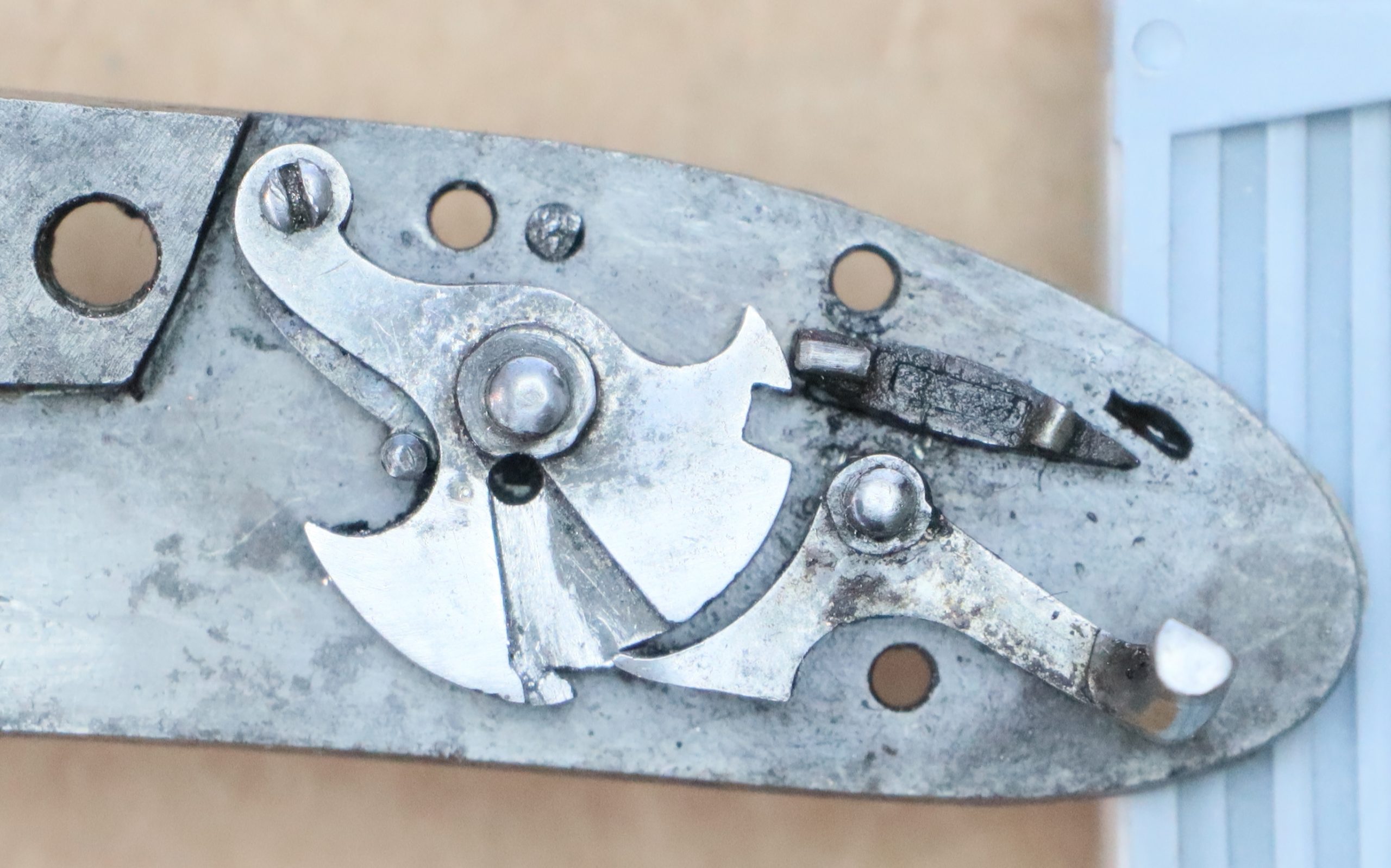The detent on a lock is a means of preventing the sear from catching in the half cock notch as the gun or pistol is fired. With a gun designed for a robust trigger pull, for instance a shotgun or military rifle, the trigger finger will hold the trigger back long enough for the sear to pass the half cock notch before releasing it and taking it up again – an involuntary action called the secong pull that was the bane of lock designers when single trigger shotguns were being introduced. Anyway if the gun or pistol is designed to have a very light trigger pressure and be let off with a very gentle pressure, the trigger finger may well not hold the sear away from the half cock bend on firing, and the cock will stop in the half cock position. A similar problem occurs with a set trigger where the trigger pull releases a sprung loaded trigger plate that hits the sear arm by inertia – in this case its almost certain that the sear will fall into the half cock notch. So a detent is required on rifles and target firearms and was frequently used on later duelling pistols.. I don’t have a date for the introduction of detents – I’d guess early to mid 18th century? Certainly common by the resurgence of English gunmaking around the mid to late 18th century.
I’m not sure how many different designs of detent there are, but here is the most common where a small component called the ‘fly’ pivots in a cutout on the tumbler and has a blunt pointed end that deflects the sear. There are two variations I have come across – in one the fly pivots in a small hole in the tumbler near to the tumbler pivot, and in the other, the fly has a ring on its end that fits over the tumbler pivot and lies in a recess on the tumbler surface. The fly is quite thin, maybe around 0.4mm and moves in a similarly shallow recess. The fly shown here pivots in a hole in the tumbler.
Here is a sequence showing the tumbler and sear in different positions without the fly present;
n.b. its written as if the tumbler is fixed and the sear moves, which of course is not the case, but its how I was thinking about it and it seemed to make the explanation easier?
Full cock, no fly present – you can see how easy it would be for the sear to slip into the half cock bent on firing
(in a lock designed not to have a detent, the half cock notch would not protrude so far, but the principle remains)
Half cock – no fly – in this position the slide safety can engage with the notch in the tumbler
although here it doesn’t look like it will – it works anyway!”
here its on full cock with the fly in position ready to guard the half cock bent.
here the tumbler is rotating and the fly has rotated relative to the tumbler so as to lift the sear over the half cock notch – job done!
From the fired position the sear will drag the fly upwards until it hits the edge of its recess then the sear will climb over it and as the cock is eased a bit , will find the full cock notch.
If you want to put the lock in the half cock position, the sear will drag the fly ahead of it, leaving the half clck notch open.
To go from half cock to full cock the sear will push the fly up until it hits the top of its recess, when it will climb over it and come back to find the full cock notch.
All this needs careful setting up , of course. quite a fiddly job, but once its set up right it should be OK for ever…….




